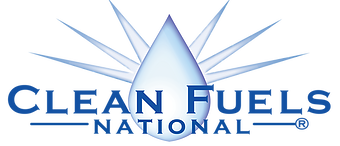One of the easiest ways to protect your fuel supply is to keep water out of your sumps and out of your tank. Water causes a multitude of complications and deteriorates the quality of your fuel. Water allows for microbial growth and the various microorganisms that can infiltrate a fuel supply wage war not only on the fuel itself, but on the equipment used to store and dispense that fuel.
Most bacteria and fungus get energy from breaking down carbohydrates into simple sugars. The organisms that infiltrate fuel supplies use the long carbon-chains in fuel instead typical carbohydrates. They are literally eating your fuel. They tend to live at that interface between the water and the fuel and require both to thrive. Remove the water, and you remove half of the equation necessary for microbial growth.
But it isn’t just the fuel that is being devoured by these creatures. Every surface in the tank is threatened. Not only are they floating in cozy layer between the fuel and water, they are colonizing the surfaces of all the equipment inside that tank environment. They eat away at the pipes, the gauges, the pumps, the tank itself. No material is safe.

Microorganisms are often capable of forming what is called a bio-film. It’s often comprised of multiple species living cooperatively, creating a slimy layer coating the interior of the tank, the pipes, the pump, etc. This biofilm is incredibly damaging to the surfaces it infiltrates.
Some of these organisms are adept at using the resins in fiberglass tanks as their main source of energy, others rely on the fuel itself, some may even rely on the metabolic byproducts of another microorganism completely – these groups of microorganisms work in unison.

On metal pipes and pumps, the secretions from these biofilms wreak havoc, eating away at vulnerable surfaces. Some of these microorganisms produce acid as waste, not only acidifying the fuel, but corroding all metal ancillary equipment.
The vapors from the fuel provides enough food for these organisms to produce a biofilm in the ullage area, coating the entire interior of the tank in corrosive slime. Even a small amount of water is enough for these destructive organisms to take root. Adding to the problem, these organisms often produce water as a waste product and can take a tiny amount of water and turn it into a real problem.
With a heavily impacted tank, where water has been allowed to sit and has caused these intruders to flourish, aggressive action is needed to save your fuel and equipment from further damage. We recommend treatment with appropriate biocide and we have thoroughly examined the biocides on the market to narrow down our selection to the very best, most cost effective products available.
It isn’t enough to just kill the microorganisms in the fuel. The fallout of dead bacteria and fungus, the remnants of the biofilms and rag layer, will endlessly clog filters and must be removed from the tank. This is why we follow up with an aggressive agitation and thorough filtration of the tank contents.
The next step is to prevent the problem from returning, with a vigilant housekeeping regimen and dedication to keep water out of the sumps and out of the tank. We have created a housekeeping checklist for our customers, outlining the best practices to keep moisture from causing a cascade of problems in your tank. Check back next week for a detailed look at our housekeeping checklist, or contact us at 260-346-2500 and we will be happy to discuss our housekeeping schedule with you!























